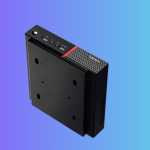
Over the most recent few weeks, various organizations cautioned that interest for client PCs and other buyer hardware is mellowing in an oversupply of equipment parts and cost drops. Costs of item powerful random access memory (DRAM) act as one of the most mind-blowing quick signs of equipment market oversupply or undersupply. We are amid oversupply, trusts TrendForce.
As shopper interest in PC slow down, DRAM costs are anticipated to drop
Perceiving how energetically huge DRAM designers are forfeiting valuing for deals, TrendForce currently acknowledges that prices of purchaser DRAM will drop by 13% to 18% in the third quarter of this year and afterward by another 3% to 8% in the fourth quarter. The organization expected DRAM statements to increase to 13% in Q3 and up to 5% in Q4.
As a rule, buyer DRAM ICs show that the market is oversupplied, so expect a comparable, 13% to 18% in Q3 2022, value drop of PC DRAMs this quarter.
While it is difficult to assess how fundamentally the costs of DDR4 and DDR5 will drop this quarter, it appears reasonable that these ICs will come around no less than 10% in the following few long periods. It is not yet clear what this will mean for the costs of actual modules since both AMD and Intel are carrying out their new DDR5-supporting stages this fall. In any case, fabricating a DDR5-supporting framework in the not-so-distant future will undoubtedly be more valuable from a cost and execution perspective than it was a while prior.

At the point when chips, as a rule, were hard to come by (many are), PC creators and enormous purchaser component makers stored memory to guarantee the consistent creation of their frameworks. Yet, as interest in customer work areas and PCs relax, equipment providers will generally utilize memory from their stocks instead of purchasing new chips from DRAM makers.
The conspicuous players in the space are, as of now, attempting to redress. To animate interest (and maybe persuade PC creators to increment memory content in their items), Samsung and SK Hynix cut the costs of their standard DRAM. Different providers (strikingly Micron) had no real option except to stick to this same pattern.
Due to macroeconomic factors and supply chain constraints, we have seen a broadening of customer inventory adjustments. As a result, our expectations for CY22 industry bit demand growth for DRAM and NAND have declined since our June 30, 2022 earnings call, and we expect a challenging market environment in Q4 FY2022 and Q1 FY2023. Q4 FY2022 revenue may come at or below the low end of the revenue guidance range provided in our June 30 earnings call.
In Q1 FY2023, bit shipments are expected to decline sequentially, and we expect significant sequential declines in revenue and margins. […] To address the near-term environment, today we are announcing new FY2023 wafer fab equipment (WFE) Capex reductions adding to the WFE Capex reductions discussed in our June 30 earnings call. We now expect FY 2023 total Capex to be down meaningfully versus FY2022.
— a selection from a recent Micron filing with the SEC.
Recently, Micron gave an assertion guaranteeing that. Because of macroeconomic difficulties, it wouldn’t meet its income and spot shipment objectives for the successive quarter and should chop down CapEx.
The post Consumer DRAM Prices Expected To Drop 18% In Q3 2022 by Jason R. Wilson appeared first on Wccftech.
Powered by WPeMatico






